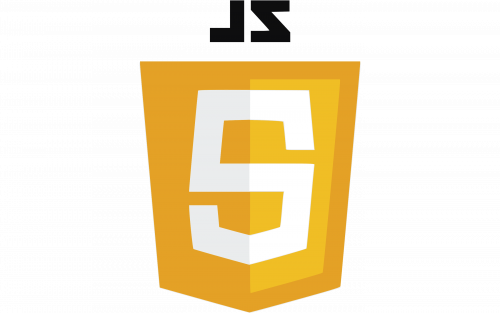JavaScript is the name of one of the most famous programming languages, which was created by Brendan Eich in 1995 and until today is considered to be one of the most used languages for web and applications.
Meaning and history
JavaScript was created by Brendan Eich in 1995 while working at Netscape Communications Corporation. Initially called Mocha, it was renamed to JavaScript as part of a marketing strategy to leverage the popularity of Java.
JavaScript became the foundational language for client-side web development, enabling interactive features in web browsers. Over time, it has evolved with new features, such as asynchronous programming, and has been standardized by ECMA International under the name ECMAScript. Today, JavaScript is an essential language for both front-end and back-end development, with widespread use in web applications across the globe.
2011 – Today
The visual identity of one of the most known programming languages in history is simple yet unique and recognizable. Composed of a graphical emblem with a bold monogram above it, the JavaScript logo looks strong and professional.
The main element of the JavaScript visual identity is a stylized yellow shield, executed in two shades of yellow in order to add a sense of volume and dynamics. The left part of the shield uses a darker shade, while the right part, in a lighter tone of yellow features a wide framing in the same shade as the left half.
The sharp and powerful custom lay drawn white letter “S” with bold clean lines and massive serifs is placed in the middle of the emblem, standing for “Script”.
Above the bright and fresh yellow and white shield there is very masculine and powerful lettering in black — “JS”, executed in thick lines with distinct straight cuts and sharp angles. The letter “J” here looks like a mirrored “L”, while “S” resembles “Z”. Is it a sign of the most used programming language, and instantly recognizable abbreviation, which is synonymous to web, script and related terms.
The current logo was designed in 2011 and has the same style as CSS and HTML visual identities, as they are all part of one company, and only vary in color palettes and lettering.
The color scheme of the JavaScript logo evokes a sense of energy and progress, being at the same time pleasant and friendly, it reflects quality, reliability, and loyalty. The yellow and white combo is perfectly balanced by a bold black inscription, which adds seriousness and professionalism to the whole look.
The JavaScript logo is minimalist yet cool. It correlates with the logos of related products, developed by the company, and shows itself as a part of something really big and significant.









